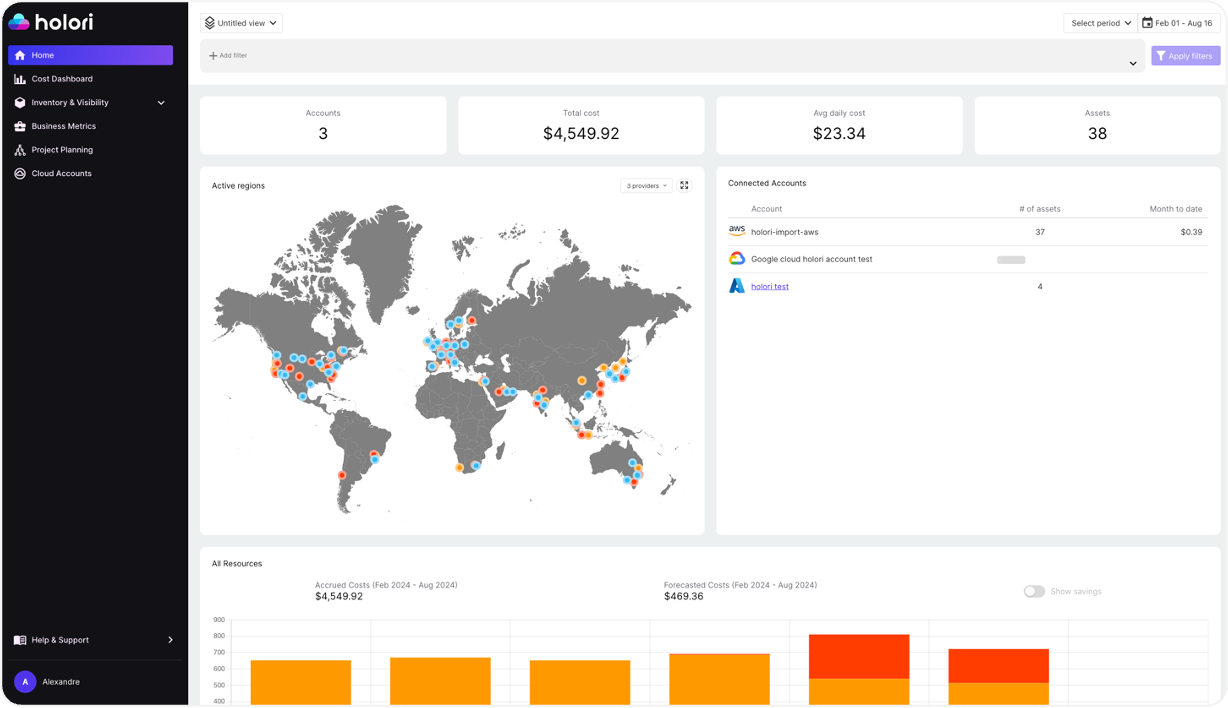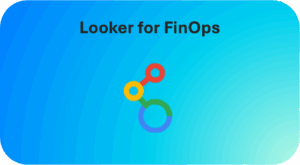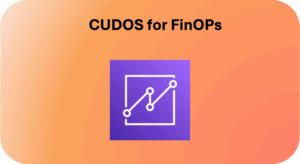FinOps, short for cloud financial management, is a set of practices designed to manage and optimize cloud spending. In the context of AWS, FinOps is about gaining visibility into cloud costs, forecasting future expenditures, and optimizing resource usage to ensure that your cloud investment delivers maximum value.
At its core, FinOps is a collaboration between finance, engineering, and operations teams to manage cloud costs more effectively. This approach not only helps in reducing unnecessary spending but also in aligning cloud investments with business objectives. FinOps is a continuous process that involves monitoring, analyzing, and optimizing cloud usage to prevent overspending and ensure cost efficiency.
Importance of AWS FinOps
AWS provides a flexible, scalable, and powerful cloud platform, but its pay-as-you-go pricing model can result in unpredictable costs if not managed effectively. In 2024, Amazon Web Services surpassed $100 billion in annual cloud revenue, highlighting just how much businesses are investing in these services. This massive expenditure underscores the growing importance of AWS FinOps processes, which are essential for optimizing cloud spending and gaining financial control. As cloud adoption continues to rise, the need for robust AWS FinOps practices will only become more critical, making this trend a key focus for organizations in the coming years.
AWS FinOps helps businesses:
- Gain Visibility: Understand where and how money is being spent.
- Optimize Costs: Identify areas where costs can be reduced without affecting performance.
- Improve Forecasting: Predict future cloud costs to budget effectively.
- Enhance Accountability: Assign costs to specific departments or projects to promote responsible usage.
By implementing a robust AWS FinOps strategy, businesses can avoid budget overruns, maximize the value of their cloud investments, and ensure that their cloud usage aligns with overall business goals.
Best Practices for AWS FinOps
Effective FinOps involves a combination of tools, processes, and collaboration. Here are some key best practices:
- Centralized Cost Management: Establish a centralized team or function responsible for overseeing cloud spending and implementing FinOps strategies.
- Data-Driven Decision Making: Utilize data and analytics to identify cost-saving opportunities and measure the impact of FinOps initiatives.
- Continuous Optimization: FinOps is an ongoing process. Regularly review and refine your strategies based on evolving cloud usage and business needs.
- Tagging: Give a label to all cloud resources to identify what they are used for
- Collaboration: Foster collaboration between finance, engineering, and operations teams to align financial goals with operational needs.
- Automation: Leverage automation tools to streamline cost optimization tasks and reduce manual effort.
- Cost Allocation: Implement a robust cost allocation model to assign costs to specific projects, departments, or business units.
- Rightsizing Resources: Ensure your resources are appropriately sized to match workload demands, avoiding overprovisioning and underutilization.
- Reserved Instances and Savings Plans: Maximize cost savings by effectively utilizing Reserved Instances and Savings Plans.
- Cost Awareness: Educate employees about cloud costs and encourage responsible usage.
- Regular Reporting: Provide regular reports on cloud spending to stakeholders, including key metrics and cost trends.
- Tooling: Use AWS native FinOps tool or third party FinOps platform to visualize, optimize costs and collaborate with all stakeholders.
Native AWS FinOps Tools
AWS provides a suite of native tools designed to help businesses manage and optimize their cloud costs. These tools are integral to any AWS FinOps strategy, offering insights, recommendations, and automation capabilities.
1. AWS Cost Explorer – The cornerstone AWS FinOps tool
AWS Cost Explorer is the most famous AWS FinOps native tool. It has been designed to help businesses gain detailed insights into their AWS spending. It provides a comprehensive view of your cloud costs, allowing you to analyze spending patterns, identify cost drivers, and make informed decisions to optimize your cloud budget.
With AWS Cost Explorer, users can visualize their cost and usage data through customizable graphs and reports. These reports can be filtered by various dimensions such as service type, account, region, or resource tags, enabling a granular analysis of where and how money is being spent. This detailed visibility is crucial for businesses that want to track spending over time, detect trends, and identify anomalies that may indicate inefficient usage or unexpected costs.
One of the standout features of AWS Cost Explorer is its forecasting capability. By analyzing historical data, the tool can predict future costs, helping businesses budget more effectively and avoid surprises. Additionally, AWS Cost Explorer offers savings plans and Reserved Instances (RIs) recommendations, which suggest opportunities to save money by committing to longer-term usage contracts.
For businesses aiming to implement a robust AWS FinOps strategy, AWS Cost Explorer is an essential tool. It empowers finance and engineering teams to collaborate effectively, ensuring that cloud spending aligns with business objectives. By leveraging its comprehensive analytics and forecasting features, businesses can optimize their cloud usage, control costs, and maximize the return on their AWS investment.
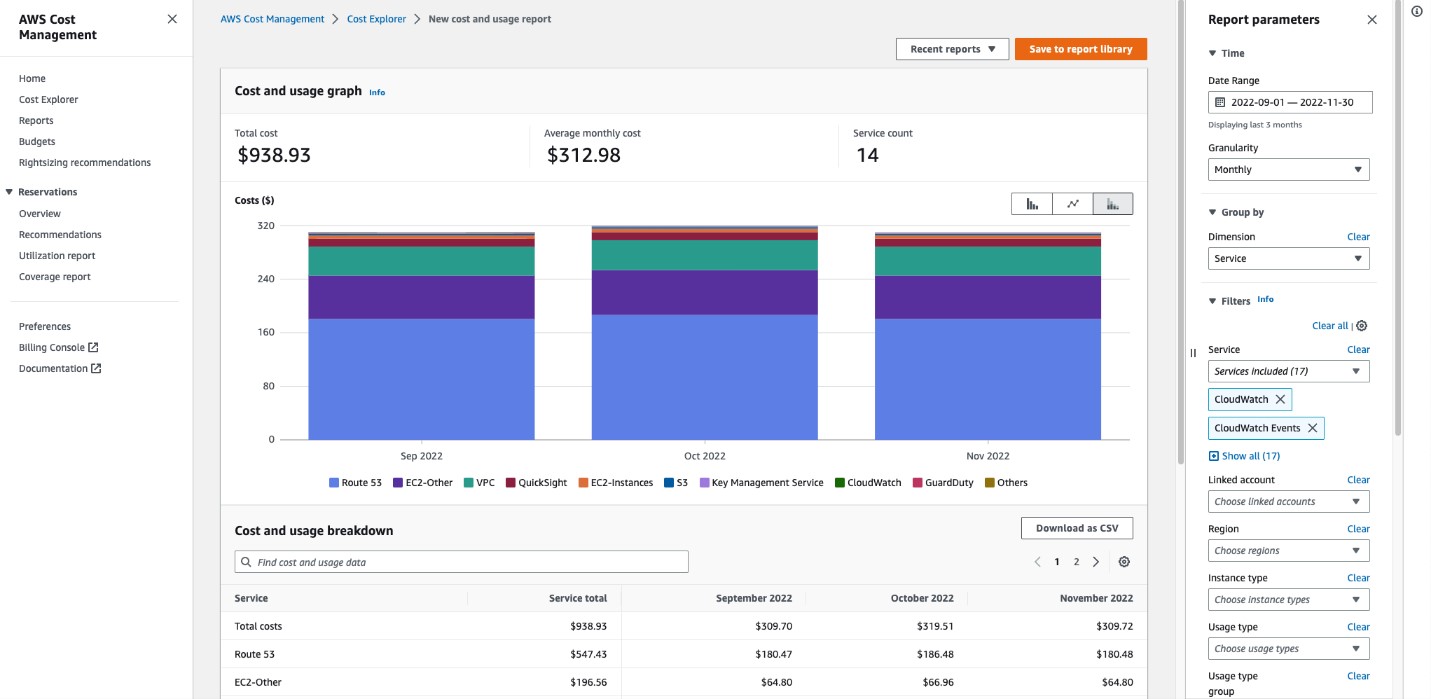
2. AWS Budgets
AWS Budgets is a powerful tool that enables businesses to set custom cost and usage budgets for their AWS environment. It provides granular control over cloud spending by allowing users to define budget thresholds for specific accounts, services, or resources. This tool is essential for organizations looking to maintain financial discipline in the cloud, as it helps prevent unexpected expenses by providing proactive alerts.
With AWS Budgets, users can create budgets tailored to their unique needs, whether for monthly, quarterly, or yearly time frames. The tool offers detailed tracking of actual costs and usage against budgeted amounts, helping teams stay on top of their financial goals. Automated alerts are a key feature, notifying users via email or SMS when costs approach or exceed predefined thresholds. This real-time monitoring ensures that potential overspending is caught early, allowing for timely adjustments.
Additionally, AWS Budgets integrates seamlessly with AWS Cost Explorer, enabling users to dive deeper into cost drivers and understand the factors contributing to budget variances. This combination of tracking, alerts, and detailed insights makes AWS Budgets an invaluable tool for managing cloud costs, optimizing usage, and ensuring that cloud investments align with business objectives.ining control over your cloud costs, helping you stay within your financial limits and avoid unexpected expenses.

3. AWS Cost Anomaly Detection
AWS Cost Anomaly Detection is a powerful tool designed to automatically monitor your AWS spending and alert you to unexpected cost spikes or anomalies. Leveraging machine learning, the service continuously analyzes your historical cost and usage data to establish a baseline of what normal spending looks like for your AWS environment.
When an anomaly is detected—such as an unplanned increase in resource usage or an unexpected charge—the service sends an alert to your designated contacts via email or AWS SNS (Simple Notification Service). This allows you to quickly investigate the root cause of the anomaly, whether it’s a misconfigured resource, an overlooked service, or a potential security issue.
The key benefit of AWS Cost Anomaly Detection is its ability to provide real-time insights into cost variations, helping you catch and address issues before they escalate into significant financial impacts. This proactive approach to cost management ensures that your AWS environment remains optimized and that your cloud budget stays on track.
Setting up AWS Cost Anomaly Detection is straightforward, with customizable thresholds and alert settings to match your specific needs. You can monitor costs at various levels, such as by linked account, service, or cost category, ensuring comprehensive coverage of your cloud environment.
In summary, AWS Cost Anomaly Detection is an essential tool for maintaining financial control in the cloud, offering timely insights and alerts that enable businesses to swiftly address any unexpected changes in their AWS spending.
4. AWS Cost Optimization Hub – The newcomer AWS Finops tool
The AWS Cost Optimization Hub is a centralized resource designed to help businesses manage and reduce their cloud spending. It has been released in November 2023. It provides a comprehensive suite of best practices, tools, and guidance to ensure that your AWS environment operates efficiently without unnecessary costs. AWS Cost optimization hub is great because it gathers recommendations from many previously AWS scattered FinOps tool such as AWS compute optimizer, AWS trusted advisor or AWS cost explorer…
At the core of the AWS Cost Optimization Hub are 5 key pillars: Right Sizing, Reserved Instances recommendations, Idle resources deletion, Savings plan recommendation, resource migration/upgrade. These pillars represent the foundational strategies for cost optimization. For instance, Right Sizing focuses on matching your instance types and sizes to your workload requirements, avoiding overprovisioning. Reserved Instances allow for significant savings by committing to longer-term usage while Idle resource deletion focuses on paying only for resources you are actively using.
By following the guidelines and leveraging the tools provided by the AWS Cost Optimization Hub, businesses can achieve a leaner, more cost-effective cloud environment, ensuring they only pay for what they actually need and use.
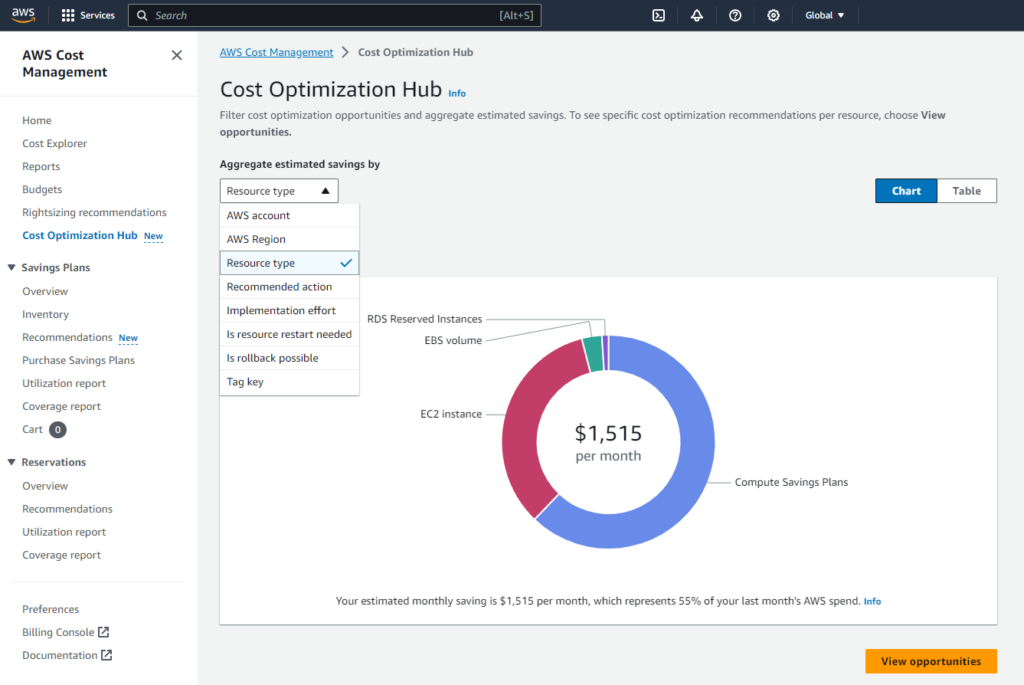
Third-Party AWS FinOps Tools
While AWS provides a strong set of native tools for cloud cost management, there are areas where these tools may fall short, such as cost allocation, simplicity, and comprehensive asset inventory management. Relying solely on AWS-native tools might also lead to a lack of objectivity in cost optimization. Additionally, for businesses using multiple cloud providers, it becomes essential to use a third-party FinOps platform that can consolidate and manage costs across different environments. Below are some of the leading third-party AWS FinOps tools that address these challenges.
1. Holori
Holori is a modern FinOps platform that provides businesses with advanced tools for visibility and cost optimization. It is a self serve platform, so users can connect their cloud accounts and start visualizing costs and recommendations in minutes without talking to any salespersons. It sands out from other tools with its simplicity and its unique graphical interface that DevOps love.
Key Features
- Multi-Cloud Cost Management: Holori supports cost management across multiple cloud providers, including AWS, Azure, and Google Cloud. This enables businesses to gain a holistic view of their cloud spending and optimize costs across different platforms.
- Mapping of your cloud footprint: Visualize your cloud infrastructure with detailed infrastructure diagrams, allowing better understanding of your environment
- Cost Optimization Recommendations: Holori provides actionable recommendations to optimize cloud costs, such as rightsizing resources, eliminating unused services, and switching to more cost-effective pricing models (savings plans/RIs).
- Simplified Reporting: Generate easy-to-understand reports that break down cloud costs by project, team, or service, making it easier to allocate costs and identify savings opportunities.
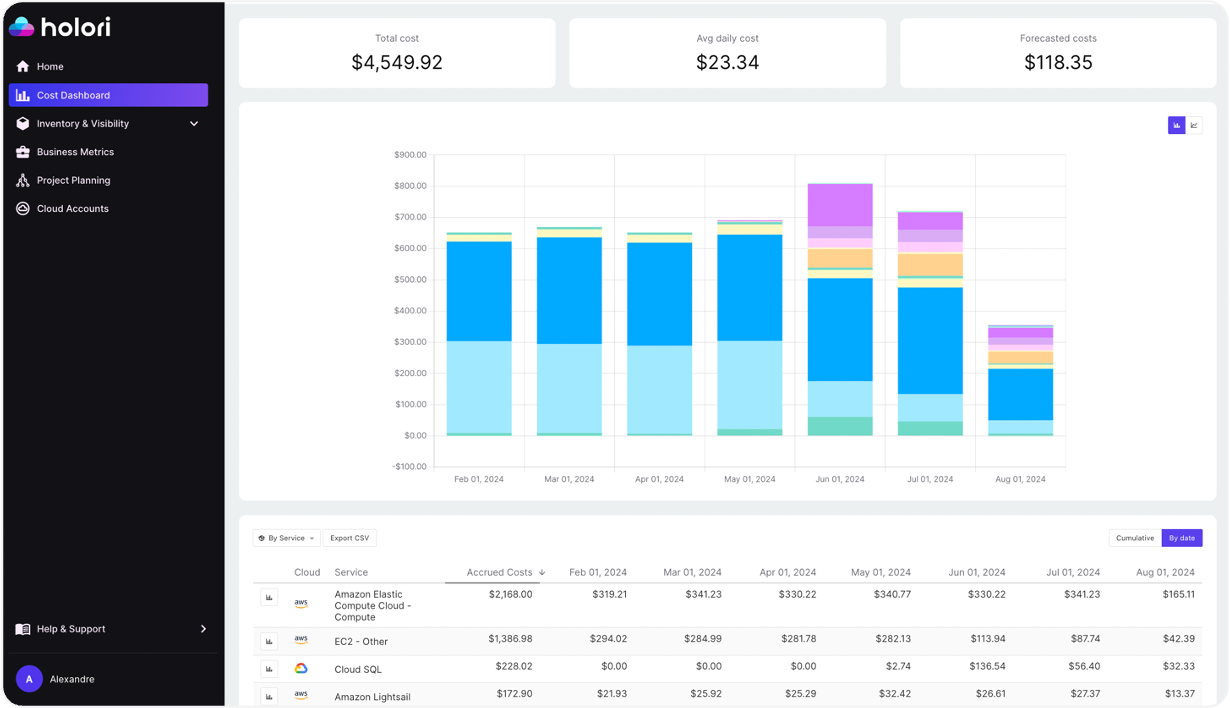
Benefits
Holori’s intuitive platform simplifies the complex task of managing multi-cloud environments, offering powerful tools for cost optimization and architecture management at a reasonable price that can afford SMEs and large corps. Its ability to consolidate costs across various cloud providers makes it an invaluable tool for businesses looking to streamline their cloud operations and reduce expenses.
2. CloudHealth by VMware
CloudHealth by VMware is a legacy cloud management platform that helps businesses manage, optimize, and secure their single, multi-cloud and hybrid environments. It provides deep insights into cloud costs and offers automation capabilities to streamline FinOps processes. The platform fits well Large corporations.
Key Features
- Detailed Cost Reporting: Gain visibility into your AWS spending with cost reports that can be filtered by account, service, region, and more.
- Policy-Driven Automation: Set policies to automate governance and compliance tasks
- Cross-Cloud Visibility: Manage and optimize costs across multiple cloud providers, including AWS, Azure, and Google Cloud.
Benefits
CloudHealth enables businesses to take control of their cloud costs with advanced reporting, automation, and multi-cloud support. Its powerful analytics and policy-driven approach help ensure that your cloud environment is both cost-effective and compliant with business policies.
3. Apptio Cloudability
Apptio Cloudability is a leading cloud financial management tool that provides businesses with the insights they need to optimize their cloud spending. It offers real-time cost monitoring, budgeting, and forecasting capabilities. The platform has been purchased by IBM in 2023 and is good fit for very large organizations.
Key Features
- Real-Time Cost Monitoring: Track your AWS, Azure and GCP spending in real-time, enabling faster decision-making and cost control.
- Advanced Cost Allocation: Allocate costs to specific teams, departments, or projects for better accountability.
- Scenario Planning: Model different scenarios to understand the financial impact of various cloud strategies and make informed decisions.
Benefits
Cloudability empowers businesses to take a proactive approach to cloud cost management with its real-time monitoring, advanced cost allocation, and scenario planning features. It’s an ideal tool for businesses that need detailed insights and control over their cloud expenses. Cloudability also provides expert consulting services to help businesses establish a robust FinOps culture.
4. Spot by NetApp
Spot by NetApp offers a suite of cloud cost optimization tools that leverage machine learning to automate resource management and reduce cloud costs. It focuses on optimizing your cloud infrastructure by intelligently managing your compute and storage resources. NetApp acquired Spotinst and Cloudcheckr to build a complete cloud management solution offering automation and visibility.
Key Features
- Automated Infrastructure Management: Automatically optimize your cloud infrastructure by resizing, pausing, or shutting down resources based on real-time usage.
- Predictive Scaling: Use predictive analytics to scale resources up or down based on demand, ensuring optimal performance at the lowest cost.
- Reserved Instances Management: Optimize your Reserved Instances portfolio by automatically buying, selling, or modifying RIs to match your usage patterns.
Benefits
Spot by NetApp provides businesses with powerful automation tools that reduce cloud costs by optimizing resource utilization. Its predictive scaling and automated infrastructure management features make it an invaluable tool for businesses looking to achieve significant cost savings without manual intervention. It is an invaluable tool for businesses looking to achieve significant cost savings without manual intervention.
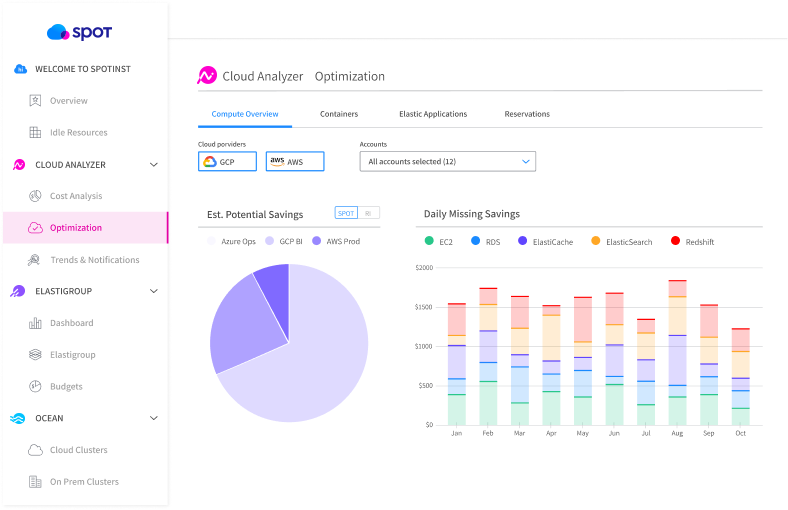
5. CAST AI
CAST AI is a cloud optimization platform that focuses on automating cost management, particularly for Kubernetes environments. It integrates seamlessly with AWS and other cloud providers to deliver real-time cost optimization, ensuring that your cloud infrastructure is both efficient and cost-effective.
Key Features
- Automated Cost Optimization: CAST AI automatically identifies and executes optimization opportunities, such as rightsizing Kubernetes clusters and eliminating idle resources.
- Multi-Cloud Support: Manage and optimize Kubernetes clusters across multiple cloud providers, including AWS, Google Cloud, and Azure, from a single platform.
- Spot Instance Automation: Leverage spot instances automatically to reduce cloud costs while maintaining performance and availability.
Benefits
CAST AI stands out for its focus on Kubernetes environments, offering tailored optimization strategies that reduce costs while ensuring performance. Its multi-cloud support and automated cost optimization make it an excellent choice for businesses looking to streamline cloud spending across different platforms and workloads.
Wrap-up
AWS FinOps is essential for businesses looking to optimize their cloud spending and align their cloud investments with their overall business strategy. By leveraging native AWS tools like Cost Explorer, Budgets, and AWS Cost Optimization Hub or third-party solutions like Holori, CloudHealth, Apptio, Cloudability…businesses can gain comprehensive control over their cloud costs.
Implementing a robust FinOps strategy requires a combination of the right tools, processes, and collaboration across teams. By following best practices and continually refining your approach, you can ensure that your AWS environment is cost-efficient, scalable, and aligned with your business objectives.
This guide provides a foundation for understanding and implementing AWS FinOps, but the journey doesn’t end here. As cloud environments evolve, so too must your FinOps strategy. Regularly review your cloud usage, stay informed about new tools and techniques, and be proactive in managing your cloud costs to maximize the value of your AWS investment.
To get you started fast on your AWS FinOps journey, Holori offer a 2 weeks trial period : https://app.holori.com/
